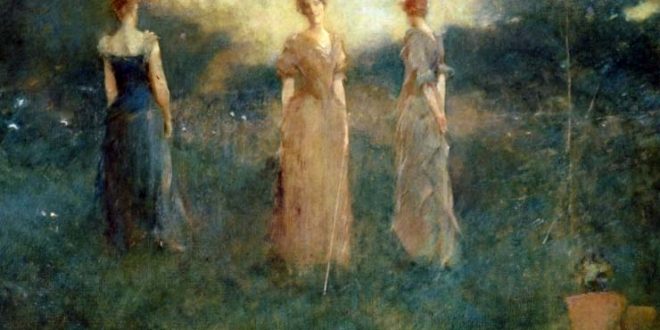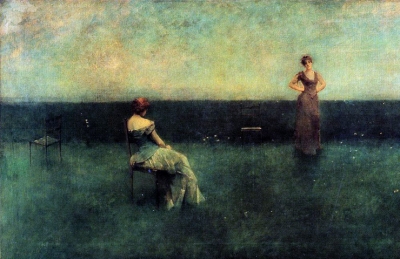Painting figures in tonal style
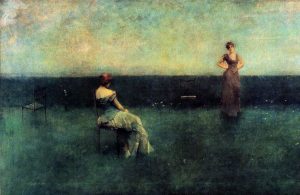 early life experience brought him about a love of music (which would later influence many of his paintings). Painting figures in a tonalist style at a time when Impressionism was dominant, he became a artist influenced by James Abbott McNeill Whistler. As you can observe, his unique style approached the mysterious world of the French symbolists. After a brief period in Paris, THOMAS WILMER DEWING taught at the School of the Museum of Fine Arts, Boston. In Washington, D.C. you can admire his 1890’s painting ” Summer”, at the Smithsonian American Art Museum.
early life experience brought him about a love of music (which would later influence many of his paintings). Painting figures in a tonalist style at a time when Impressionism was dominant, he became a artist influenced by James Abbott McNeill Whistler. As you can observe, his unique style approached the mysterious world of the French symbolists. After a brief period in Paris, THOMAS WILMER DEWING taught at the School of the Museum of Fine Arts, Boston. In Washington, D.C. you can admire his 1890’s painting ” Summer”, at the Smithsonian American Art Museum.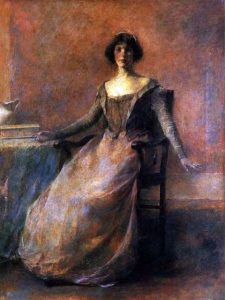
THOMAS WILMER DEWING was born on a May day in Newton Lower Falls (Massachusetts). As a child, he was interested in both drawing and in playing the violin. By 1872, he studied paintings in the collection of the Boston Museum of Fine Arts. In 1876 went to Europe, where he entered the Académie Julian, where he centered on anatomical drawing and modeling. By the late 1880s, he had formed his subject matter: elegant and refined women portrayed, placed in interiors or outdoors, in soft green fields. If you want to observe his 1912’s famous painting “Lady in Gold”, you need to go at the New York Brooklyn Museum.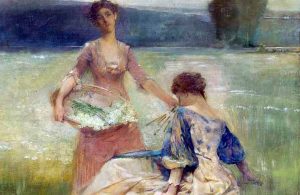
In December 1897 THOMAS WILMER DEWING joined a group of Boston and New York painters, in forming The Ten. He knew that he needed to live in a great city to establish himself as a leading artist, for that he moved in New York where – for more than fifteen years – through art, music, and literature, he and his friends believed that the role of art was to suggest emotions or recall memories of past experiences. He died at the age of eighty-seven in New York on a November day. Don’t forget: at the Freer Gallery of the Smithsonian Institution, a room is devoted to Dewing’s paintings.
The intellectual property of the images that appear in this blog correspond to their authors. The sole purpose of this site, is to spread the knowledge of these artists and that other people enjoy their works.
 Meeting Benches World art in all forms
Meeting Benches World art in all forms
